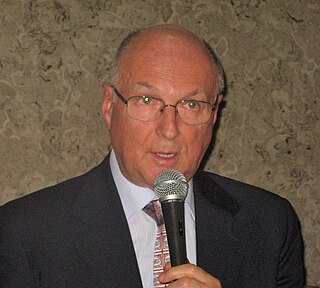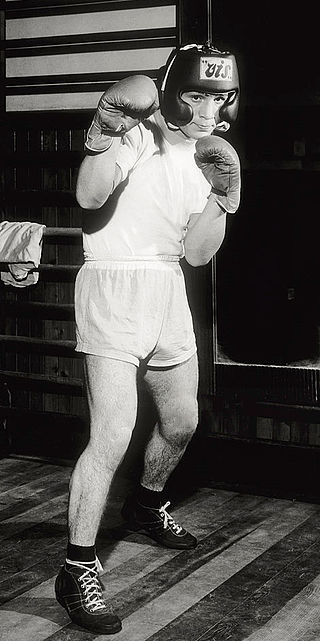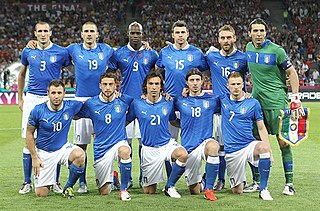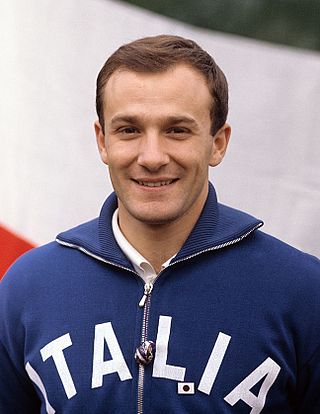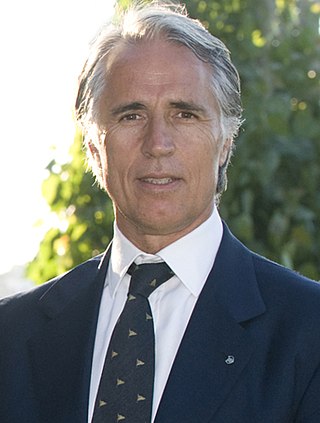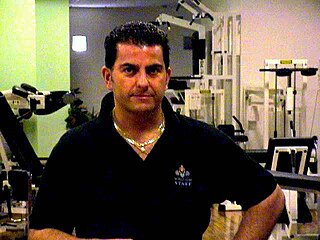| # | Athlete | Sport | Birthplace | Birth (death) date |
|---|
| 1 | Gian Giorgio Trissino | Equestrian sports | Vicenza, Italy | 22 July 1877 – 22 December 1963 | | 2 | Giovanni Raichevich | Wrestling | Trieste, Italy | 10 June 1881 – 1 November 1957 | | 3 | Giorgio Zampori | Gymnastics | Milano, Italy | 4 June 1887 – 7 December 1965 | | 4 | Paolo Salvi | Gymnastics | Albenga, Italy | 22 November 1891 – 12 January 1945 | | 5 | Tazio Nuvolari | Auto racing | Castel d'Ario, Italy | 16 November 1892 – 11 August 1953 | | 6 | Costante Girardengo | Cycling | Novi Ligure, Italy | 18 March 1893 – 9 February 1978 | | 7 | Nedo Nadi | Fencing | Livorno, Italy | 9 June 1894 – 29 January 1940 | | 8 | Ottavio Bottecchia | Cycling | San Martino, Italy | 11 August 1894 – 15 June 1927 | | 9 | Carlo Galimberti | Weightlifting | Santa Fe, Argentina | 2 August 1894 – 10 August 1939 | | 10 | Ugo Frigerio | Athletics | Milano, Italy | 16 September 1901 – 7 July 1968 | | 11 | Alfredo Binda | Cycling | Cittiglio, Italy | 11 August 1902 – 19 July 1986 | | 12 | Learco Guerra | Cycling | San Nicolò Po, Italy | 14 October 1902 - 7 February 1963 | | 13 | Romeo Neri | Gymnastics | Rimini, Italy | 26 March 1903 – 23 September 1961 | | 14 | Giulio Gaudini | Fencing | Rome, Italy | 28 September 1904 – 6 January 1948 | | 15 | Primo Carnera | Boxing | Sequals, Italy | 26 October 1906 – 29 June 1967 | | 16 | Giuseppe Meazza | Football | Milano, Italy | 23 August 1910 – 21 August 1979 | | 17 | Silvio Piola | Football | Robbio, Italy | 29 September 1913 – 4 October 1996 | | 18 | Gino Bartali | Cycling | Ponte a Ema, Italy | 18 July 1914 – 5 May 2000 | | 19 | Agostino Straulino | Sailing | Mali Lošinj, Croatia | 10 October 1914 – 14 December 2004 | | 20 | Ondina Valla | Athletics | Bologna, Italy | 20 May 1916 – 16 October 2006 | | 21 | Adolfo Consolini | Athletics | Costermano sul Garda, Italy | 5 January 1917 – 20 December 1969 | | 22 | Alberto Ascari | Auto racing | Milano, Italy | 13 July 1918 – 26 May 1955 | | 23 | Valentino Mazzola | Football | Cassano d'Adda, Italy | 26 January 1919 – 4 May 1949 | | 24 | Edoardo Mangiarotti | Fencing | Renate, Italy | 7 April 1919 – 25 May 2012 | | 25 | Fausto Coppi | Cycling | Castellania Coppi, Italy | 15 September 1919 – 2 January 1960 | | 26 | Zeno Colò | Alpine skiing | Abetone, Italy | June 30, 1920 – May 12, 1993 | | 27 | Fiorenzo Magni | Cycling | Vaiano, Italy | 7 December 1920 – 19 October 2012 | | 28 | Giuseppe Delfino | Fencing | Torino, Italy | 22 November 1921 – 10 August 1999 | | 29 | Piero D'Inzeo | Equestrian sports | Rome, Italy | 4 March 1923 – 13 February 2014 | | 30 | Cesare Rubini [lower-alpha 1] | Water polo & Basketball | Trieste, Italy | 2 November 1923 – 8 February 2011 | | 31 | Raimondo D'Inzeo | Equestrian sports | Poggio Mirteto, Italy | 8 February 1925 – 15 November 2013 | | 32 | Irene Camber | Fencing | Trieste, Italy | 12 February 1926 | | 33 | Pino Dordoni | Athletics | Piacenza, Italy | 28 June 1926 – 24 October 1998 | | 34 | Eugenio Monti | Bob | Toblach, Italy | 23 January 1928 – 1 December 2003 | | 35 | Enzo Maiorca | Freediving | Syracuse, Italy | 21 June 1931 – 13 November 2016 | | 36 | Antonio Maspes | Cycling | Milano, Italy | 14 January 1932 – 19 October 2000 | | 37 | Nicola Pietrangeli | Tennis | Tunis, Tunisia | 11 September 1933 | | 38 | Abdon Pamich | Athletics | Rijeka, Croatia | 3 October 1933 | | 39 | Lea Pericoli | Tennis | Milano, Italy | 22 March 1935 | | 40 | Graziano Mancinelli | Equestrian sports | Milano, Italy | 18 February 1937 – 8 October 1992 | | 41 | Eraldo Pizzo | Water polo | Rivarolo Ligure, Italy | 21 April 1938 | | 42 | Nino Benvenuti | Boxing | Isola d'lstria, Italy | 26 April 1938 | | 43 | Livio Berruti | Athletics | Torino, Italy | 19 May 1939 | | 44 | Sante Gaiardoni | Cycling | Villafranca di Verona, Italy | 29 June 1939 | | 45 | Franco Nones | Cross-country skiing | Castello-Molina di Fiemme, Italy | 1 February 1941 | | 46 | Marco Bollesan | Rugby | Chioggia, Italy | 7 July 1941 – 11 April 2021 | | 47 | Franco Menichelli | Gymnastics | Rome, Italy | 3 August 1941 | | 48 | Bruno Arcari | Boxing | Atina, Italy | 1 January 1942 | | 49 | Dino Zoff | Football | Mariano del Friuli, Italy | 28 February 1942 | | 50 | Giacomo Agostini | Motorcycle sport | Brescia, Italy | 16 June 1942 | | 51 | Felice Gimondi | Cycling | Sedrina, Italy | 29 September 1942 – 16 August 2019 | | 52 | Mauro Checcoli | Equestrian sports | Bologna, Italy | 1 March 1943 | | 53 | Gianni Rivera | Football | Alessandria, Italy | 18 August 1943 | | 54 | Roberto Marson | Paralympic sports | Pasiano di Pordenone, Italy | 29 June 1944 – 7 November 2011 | | 55 | Gigi Riva | Football | Leggiuno, Italy | 7 November 1944 | | 56 | Luciano Giovannetti | Skeet shooting | Pistoia, Italy | 25 September 1945 | | 57 | Renato Molinari | Powerboating | Nesso, Italy | 27 February 1946 | | 58 | Klaus Dibiasi | Diving | Hall in Tirol, Austria | 6 October 1947 | | 59 | Dino Meneghin | Basketball | Alano di Piave, Italy | 18 January 1950 | | 60 | Adriano Panatta | Tennis | Rome, Italy | 9 July 1950 | | 61 | Gustavo Thoeni | Alpine skiing | Trafoi, Italy | 28 February 1951 | | 62 | Oreste Perri | Canoeing | Castelverde, Italy | 27 July 1951 | | 63 | Pietro Mennea | Athletics | Barletta, Italy | 28 June 1952 – 21 March 2013 | | 64 | Pierluigi Marzorati | Basketball | Figino Serenza, Italy | 12 September 1952 | | 65 | Corrado Barazzutti | Tennis | Udine, Italy | 19 February 1953 | | 66 | Sara Simeoni | Athletics | Rivoli Veronese, Italy | 19 April 1953 | | 67 | Piero Gros | Alpine skiing | Sauze d'Oulx, Italy | 30 October 1954 | | 68 | Novella Calligaris | Swimming | Padova, Italy | 27 December 1954 | | 69 | Daniele Masala | Modern pentathlon | Rome, Italy | 12 February 1955 | | 70 | Costantino Rocca | Golf | Bergamo, Italy | 4 December 1956 | | 71 | Gabriella Dorio | Athletics | Veggiano, Italy | 27 June 1957 | | 72 | Peppiniello Di Capua | Rowing | Salerno, Italy | 15 March 1958 | | 73 | Alberto Cova | Athletics | Cremnago, Italy | 1 December 1958 | | 74 | Ezio Gamba | Judo | Brescia, Italy | 2 December 1958 | | 75 | Patrizio Oliva | Boxing | Napoli, Italy | 28 January 1959 | | 76 | Gelindo Bordin | Athletics | Longare, Italy | 4 February 1959 | | 77 | Giuseppe Abbagnale | Rowing | Pompei, Italy | 24 July 1959 | | 78 | Paola Fantato | Paralympic sports | Verona, Italy | 13 September 1959 | | 79 | Andrea Benelli | Skeet shooting | Firenze, Italy | 28 June 1960 | | 80 | Mauro Numa | Fencing | Mestre, Italy | 18 November 1961 | | 81 | Carmine Abbagnale | Rowing | Pompei, Italy | 5 January 1962 | | 82 | Manuela Di Centa | Cross-country skiing | Paluzza, Italy | 3 January 1963 | | 83 | Francesco Attolico | Water polo | Bari, Italy | 23 March 1963 | | 84 | Sandro Campagna | Water polo | Syracuse, Italy | 26 June 1963 | | 85 | Luca Pancalli | Paralympic sports | Rome, Italy | 16 April 1964 | | 86 | Josefa Idem | Canoeing | Goch, Germany | 23 September 1964 | | 87 | Agostino Abbagnale | Rowing | Pompei, Italy | 25 August 1966 | | 88 | Alberto Tomba | Alpine skiing | Bologna, Italy | 19 December 1966 | | 89 | Roberto Baggio | Football | Caldogno, Italy | 18 February 1967 | | 90 | Lorenzo Bernardi | Volleyball | Trento, Italy | 11 August 1968 | | 91 | Antonio Rossi | Canoeing | Lecco, Italy | 19 December 1968 | | 92 | Stefania Belmondo | Cross-country skiing | Vinadio, Italy | 13 January 1969 | | 93 | Giorgio Lamberti | Swimming | Brescia, Italy | 28 January 1969 | | 94 | Jury Chechi | Gymnastics | Prato, Italy | 11 October 1969 | | 95 | Alessandra Sensini | Sailing | Grosseto, Italy | 26 January 1970 | | 96 | Andrea Giani | Volleyball | Napoli, Italy | 22 April 1970 | | 97 | Giovanna Trillini | Fencing | Jesi, Italy | 17 May 1970 | | 98 | Deborah Compagnoni | Alpine skiing | Bormio, Italy | 4 June 1970 | | 99 | Stefano Baldini | Athletics | Castelnovo di Sotto, Italy | 25 May 1971 | | 100 | Domenico Fioravanti | Swimming | Novara, Italy | 31 May 1977 | | December 2015 inductees [4] | | 101 | Maurizio Damilano | Athletics | Scarnafigi, Italy | 6 April 1957 | | 102 | Gianni De Magistris | Water polo | Florence, Italy | 3 December 1950 | | 103 | Duilio Loi | Boxing | Trieste, Italy | 19 April 1929 – 20 January 2008 | | 104 | Francesco Moser | Cycling | Palù di Giovo, Italy | 19 June 1951 | | 105 | Enrico Fabris | Ice skating | Asiago, Italy | 5 October 1981 | | 106 | Armin Zoeggeler | Luge | Merano, Italy | 4 January 1974 | | 107 | Dorando Pietri | Athletics | Correggio, Italy | 16 October 1885 – 7 February 1942 | | 2016 inductees [5] | | 108 | Alberto Braglia | Gymnastics | Campogalliano, Italy | 16 October 1885 – 7 February 1942 | | 109 | Sandro Mazzinghi | Boxing | Pontedera, Italy | 3 October 1938 – 22 August 2020 | | 110 | Paola Pigni | Athletics | Milan, Italy | 30 December 1945 – 11 June 2021 | | 111 | Mario Fiorillo | Water polo | Naples, Italy | 16 December 1962 | | 112 | Valentina Vezzali | Fencing | Jesi, Italy | 14 February 1974 | | 2018 inductees [6] | | 113 | Luigi Beccali | Athletics | Milan, Italy | 19 November 1907 – 29 August 1990 | | 114 | Ercole Baldini | Cycling | Villanova di Forlì, Italy | 26 January 1933 – 1 December 2022 | | 115 | Paolo Maldini | Football | Milan, Italy | 26 June 1968 | | 116 | Samuele Papi | Volleyball | Ancona, Italy | 20 May 1973 | | 117 | Massimiliano Rosolino | Swimming | Naples, Italy | 11 July 1978 | | 2019 inductees [7] | | 118 | Sara Anzanello | Volleyball | San Donà di Piave, Italy | 30 July 1980 - 25 October 2018 | | 119 | Antonella Bellutti | Cycling | Bolzano, Italy | 7 November 1968 | | 120 | Roberto Cammarelle | Boxing | Cinisello Balsamo, Italy | 22 March 1980 | | 2021 inductees [8] | | 121 | Paolo Rossi | Football | Prato, Italy | 23 September 1956 – 9 December 2020 | | 122 | Alessandro Andrei | Athletics | Florence, Italy | 3 January 1959 | | 123 | Vincenzo Maenza | Wrestling | Imola, Italy | 2 May 1962 | | 124 | Gabriella Paruzzi | Cross-country skiing | Udine, Italy | 21 June 1969 | | 125 | Paolo Bettini | Cycling | Cecina, Italy | 1 April 1974 | | 2023 inductees [9] | | 126 | Flavia Pennetta | Tennis | Brindisi, Italy | 25 February 1982 | | 127 | Tania Cagnotto | Diving | Bolzano, Italy | 15 May 1985 | | 128 | Niccolò Campriani | Skeet shooting | Florence, Italy | 6 November 1987 | | 129 | Fabio Cannavaro | Football | Naples, Italy | 13 September 1973 | | 130 | Amedeo Pomilio | Water polo | Pescara, Italy | 11 February 1967 | | 131 | Giulia Quintavalle | Judo | Livorno, Italy | 6 March 1983 | | 132 | Carlo Molfetta | Taekwondo | Mesagne, Italy | 15 February 1984 | | 133 | Marco Galiazzo | Archery | Padua, Italy | 7 May 1983 | | 134 | Daniele Molmenti | Canoeing | Pordenone, Italy | 1 August 1984 | | 135 | Antonio Tartaglia | Bob | Casalbordino, Italy | 13 January 1968 | | 136 | Günther Huber | Bob | Bruneck, Italy | 28 October 1965 | | 137 | Marco Albarello | Cross-country skiing | Aosta, Italy | 31 May 1960 | | 138 | Maurilio De Zolt | Cross-country skiing | San Pietro di Cadore, Italy | 29 September 1950 | | 139 | Silvio Fauner | Cross-country skiing | San Pietro di Cadore, Italy | 1 November 1968 | | 140 | Giorgio Vanzetta | Cross-country skiing | Cavalese, Italy | 9 October 1959 |
|
|





